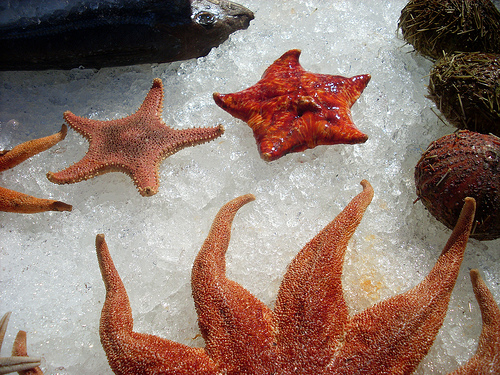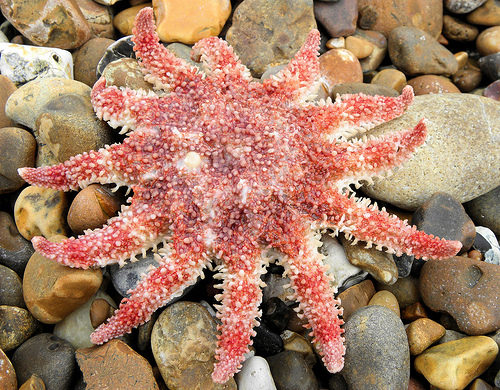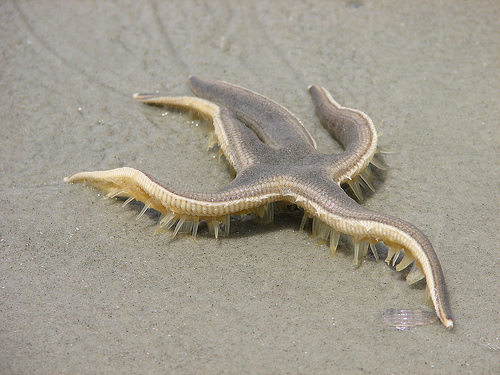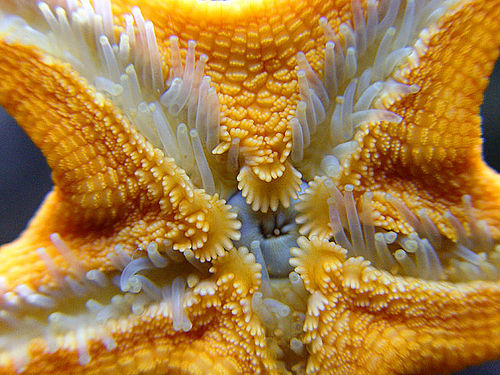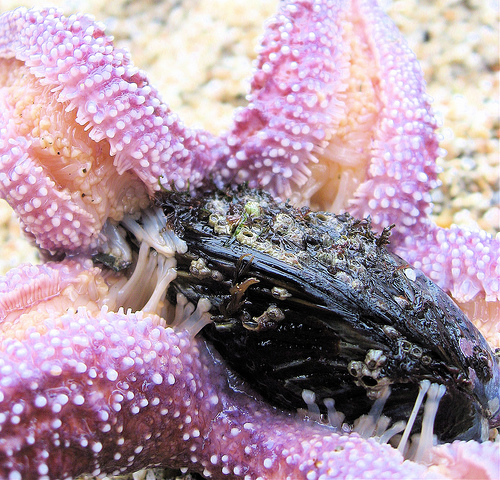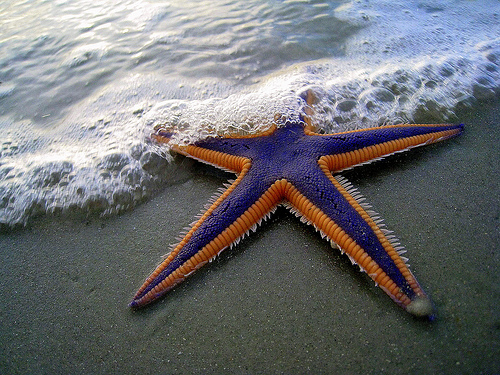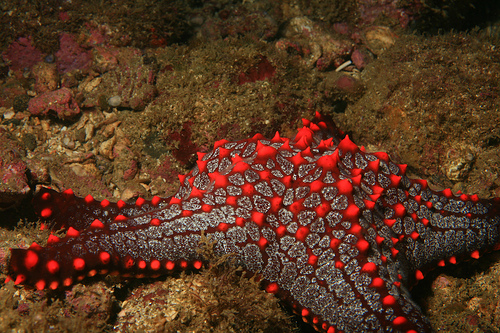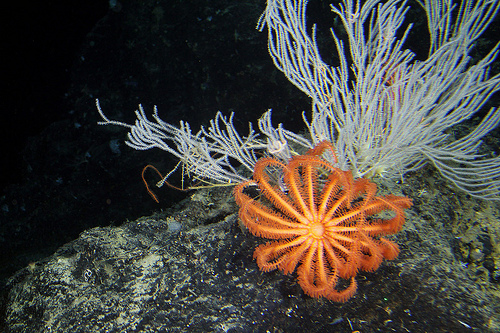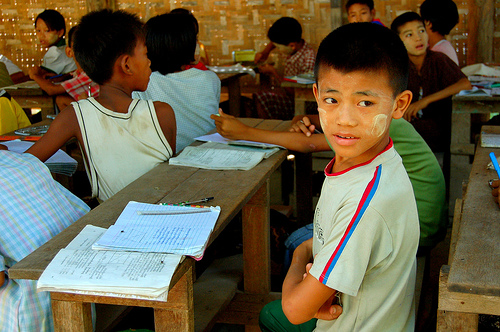Ten Amazing Facts About Starfish!
We’re so excited about our Literacy for Anywhere project that we’re going to share a few of the great facts and creative commons pictures that we find as we go! Want to see facts and pictures like these turned into educational books for children everywhere? Support our campaign on IndieGoGo!
1. There are over 2,000 kinds of starfish and they can be found in every ocean in the world.
2. Starfish always have at least 5 symmetrical legs but can have as many as 40.
3. Baby starfish are really cute!
4. Starfish have eyes at the end of each arm, which can be a lot.
5. Starfish have feet that they can use to walk on land…
6. and also move food to their mouths.
7. Starfish love eating clams and shellfish, and pry them open with their arms so they can drop their stomachs inside and eat them alive!
8. Starfish come in a lot of different colors which helps them hide and sometimes even scare away prey.
9. Many starfish have tough armor, and sometimes spikes, to ward of predators.

10. Still, some manage to look like beautiful flowers of the sea.
Creative Commons Love: Brian Suda, Brian Gatwicke, Bruno Vellutini, Keith Roper, Wildcat Dunny, Damien Du Toit, Steve Jurvetson, Mark Walz, Laszlo Ilyes, and NOAA’s National Ocean Service on Flickr.com

